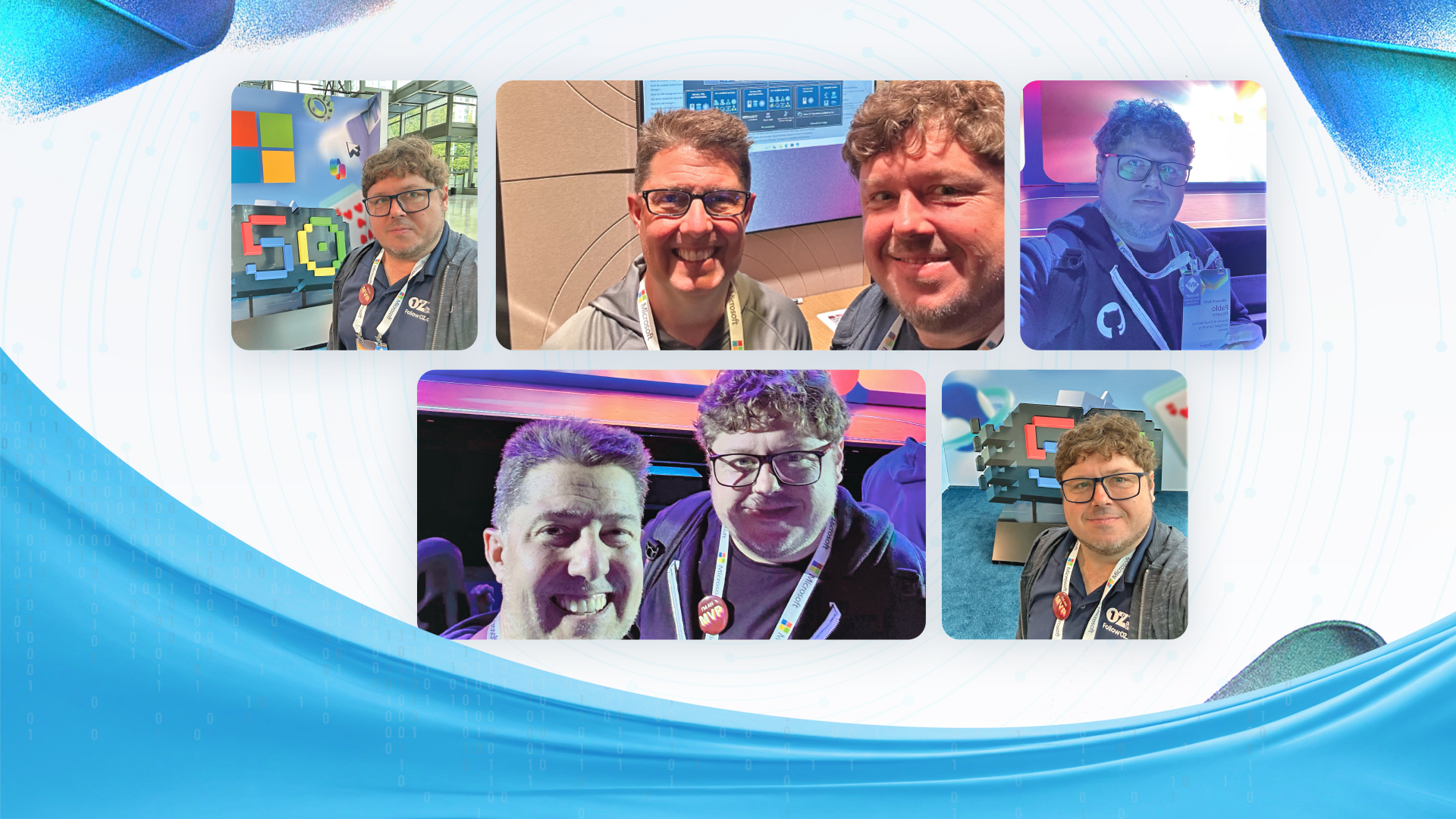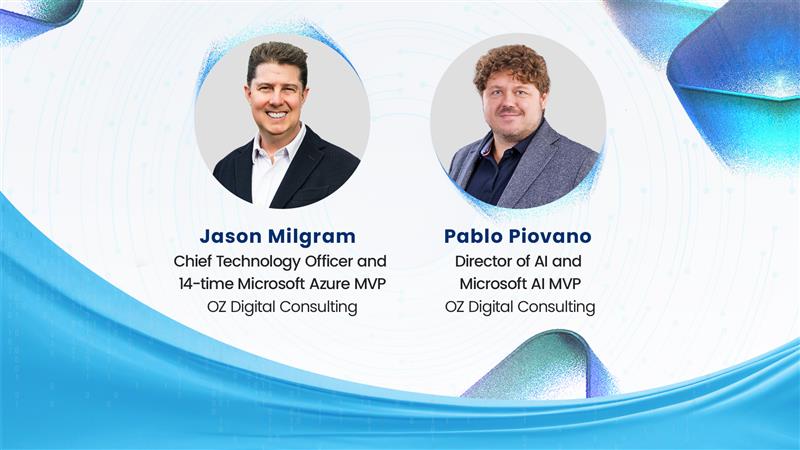AI has taken up all the oxygen in the room lately, particularly after ChatGPT caught everyone’s imagination. AI has dominated every headline and conversation since. While its impact is undeniable, we mustn’t forget other “unsung” technologies that are as transformative. These technologies keep businesses humming, help core IT do their jobs, and work behind the scenes to stabilize our IT environment. However, they’ve been relegated to the sidelines, in the wake of AI.
So, we decided it was time to pull back the curtain and give these “IT workhorses” their due. We spoke with Jason Milgram, Senior Vice President and thirteen-time Microsoft MVP, to get his views on the technologies he thinks are indispensable.
According to Jason, here are the five technologies to watch:
5. Azure Functions
Serverless architecture isn’t spoken of in the same breath as AI. Still, any pro dev will tell you how serverless architecture and tools like Azure Functions have revolutionized how applications and services are built and run. While applications are still run on servers, developers no longer have to manage the digital infrastructure; the servers are managed by the cloud service provider.
For the business, it means they can instantly scale back to zero, reduce DevOps, and go to market faster; harness its elasticity and cost-effectiveness, and bring in that infusion for their emerging workloads to build new and modernize their existing with AI, all while focusing on code.
The bottom line
Azure Functions is a developer’s dream because developers can now build and manage applications without worrying about managing and operating servers or runtimes, either in the cloud or on-premises. Devs can now reclaim their time and focus instead on developing great products at scale.
Features you’ll love
- Azure Functions’ multiple scenarios range from hosting simple server and web APIs to the most advanced event-driven app situations.
- Azure Functions on Azure Container Apps lets developers use the Azure Container Apps environment to deploy multi-type services to a cloud-native solution designed for centralized management and serverless scale.
- Dapr extension for Azure Functions enables developers to use Dapr’s powerful cloud-native building block APIs and a wide array of ecosystem components in the native and friendly Azure Functions triggers and bindings programming model. The extension is available to run on Azure Kubernetes Service and Azure Container Apps.
- A Flex Consumption plan will give customers more flexibility and customization without compromising on available features to run serverless apps. Stay tuned as this feature will go into public preview soon.
- Extension for Microsoft Azure OpenAI Service enables customers to infuse AI in their apps easily. Customers can use this extension to build new AI-led apps like retrieval-augmented generation, text completion and chat assistants.
- Visual Studio Code for the Web will provide a browser-based developer experience, making it easier to get started with Azure Functions. This Flex Consumption hosting plan feature is available for Python, Node and PowerShell apps.
4. Power Platform
The rise of low-code/no-code platforms has had an unintended effect—it’s democratized technology for everyone, fundamentally changing how we design technology. It has opened the gates to more inclusive, user-friendly development methodologies. The trend shows no signs of slowing down, with more tech companies—including Google, Microsoft, and Apple—embracing more accessible and intuitive technology development tools. A prime example of this shift is Microsoft’s Power Platform, ano-code tool that enables non-developers to create software applications.
Recognized as a leader in Robotic Process Automation (RPA) by Gartner and Forrester, Power Platform meets the needs of both small businesses and large enterprises. Its versatility makes it suitable for enterprise-level RPA, supporting thousands of users and large amounts of data. Plus, its templates and pre-built connectors integrate easily with apps like Microsoft Office 365, SharePoint, Dynamics 365, and more, allowing you to automate processes across many platforms even without knowing how to code.
The bottom line:
The growing trend toward no-code and low-code platforms focuses on user-friendly and inclusive development methodologies. These platforms, according to Forrester, have grown at a rate of 21% since 2019. Tech leaders must commit to democratizing technology for a broader audience and embrace platforms like Power Platform to nurture a more inclusive digital future.
Features you’ll love
- The New Security Hub Feature in the Microsoft Power Platform admin is a game-changer. Administrators can now quickly assess a tenant’s security posture, identify and act on the most impactful recommendations to improve it, and proactively set policies to safeguard against vulnerabilities and risks.
- A rich set of tools and security capabilities help you gain visibility and detect threats effectively.
- Microsoft Azure Virtual Network support for Power Platform in the Security Hub will enable you to integrate Power Platform with resources inside your virtual networks without exposing them over the public internet. Additionally, Microsoft EntraID Privileged Identity Management support for Power Platform enables you to temporarily grant admin permissions to specific Power Platform environments, thereby improving security posture. These new features are in preview.
3. Azure Cosmos DB
From ordering your favorite Starbucks coffee to picking up groceries, booking movie tickets, and shopping online, did you know Azure Cosmos DB powers the apps you rely on every day? Azure Cosmos DB works tirelessly behind the scenes, ensuring our modern lives—built around modern apps—run smoothly.
We expect today’s apps to be lightning-fast and always available, even during peak usage. Apps, therefore, need to be able to handle vast amounts of data and provide it to us in milliseconds. To achieve this, they must be deployed in datacenters close to their users, ensuring low latency and high availability. The rise of AI-powered apps has only added to the complexity, as these apps often integrate multiple data stores.
Enter Azure Cosmos DB. With a fully managed NoSQL, relational, and vector database, Azure Cosmos DB is a developer’s godsend. It offers single-digit millisecond response times, instant scalability, and unparalleled speed—at scale. It’s a major advance for app development, making the process faster and more productive.
Here’s why developers love Azure Cosmos DB:
- Global Data Distribution: Easily distribute data across multiple regions worldwide with turnkey multi-region support.
- Open Source APIs: Leverage open-source APIs to build and scale applications seamlessly.
- SDKs for Popular Languages: Utilize SDKs designed for the most popular programming languages, simplifying development.
- AI Integration: Benefit from AI database functionalities, including an integrated vector database and seamless integration with Azure AI Services for Retrieval Augmented Generation.
- Query Copilot: Generate NoSQL queries effortlessly using natural language prompts
The bottom line:
As a fully managed service, Azure Cosmos DB takes database administration off your hands with automatic management, updates, and patching. It also handles capacity management with cost-effective serverless and automatic scaling options that respond to application needs to match capacity with demand. Azure Cosmos DB is the unsung hero that keeps your favorite apps running smoothly, ensuring data is available instantly and reliably, no matter where you are.
Features you’ll love
- Built-in vector database capabilities: Azure Cosmos DB for NoSQL will feature built-in vector indexing and vector similarity search, enabling data and vectors to be stored together and to stay in sync. This will eliminate the need to use and maintain a separate vector database. Powered by DiskANN and available in June, Azure Cosmos DB for NoSQL will provide highly performant and highly accurate vector search at any scale. This feature is now in preview.
- Serverless to provisioned account migration: Users can transition their serverless Azure Cosmos DB accounts to provisioned capacity mode. This new feature allows a seamless transition through the Azure portal or command-line interface (CLI). During this migration process, the account will undergo changes in place, and users will retain full access to Azure Cosmos DB containers for data read and write operations. This feature is now in preview.
- Cross-region disaster recovery: With disaster recovery in vCore-based Azure Cosmos DB for MongoDB, a cluster replica can be created in another region. This cluster replica will be continuously updated with the data written in the primary region. In a rare outage in the primary region and primary cluster unavailability, this replica can be promoted to become the new read-write cluster in another region. Connection string is preserved after such a promotion, so that apps can continue to read and write to the database in another region using the same connection string. This feature is now in preview.
- Azure Cosmos DB Vercel integration: Developers building apps using Vercel can now connect easily to an existing Azure Cosmos DB database or create new Azure Try Cosmos DB accounts on the fly and integrate them into their Vercel projects. This integration improves productivity by creating apps easily with a backend database already configured. This also helps developers onboard to Azure Cosmos DB faster. This feature is now generally available.
- Go SDK for Azure Cosmos DB: The Go SDK allows customers to connect to an Azure Cosmos DB for a NoSQL account and perform operations on databases, containers and items. This release brings critical Azure Cosmos DB features for multi-region support and high availability to Go, such as the ability to set preferred regions, cross-region retries, and improved request diagnostics. This feature is now generally available.
2. Microsoft Dev Box
Microsoft Dev Box, as the name suggests, gives developers self-service access to ready-to-code cloud workstations called dev boxes. How does this transform the developer experience? This means you can configure dev boxes with tools, source code, and pre-built binaries specific to a project and access them from anywhere. The best part? You can get to work at once. You no longer have to wait for IT to set up new machines or deal with configuration headaches. Integration with Microsoft tools like Visual Studio and GitHub streamlines day-to-day workflows, making coding, testing, and deployment seamless. Plus, its robust security features ensure your code and data stay protected.
The bottom line:
Many developers are still constrained by the tools they use due to complex setups or a lack of scalability.
For example, onboarding a developer requires coordination with the infrastructure team. Configuring a proper workstation and granting access can sometimes take several weeks. Plus, this manual process is prone to errors and can cause more delays. Developers usually work on multiple projects simultaneously and managing dependencies for all these projects (different programming languages or versions) can slow them down.
Using only one physical device also means developers can’t switch between tasks as their device is limited by its static compute resources and lacks scalability.
Microsoft Dev Box changes all that. Developers can hit the ground running as soon as the Dev Box deploys. Regardless of where the Dev Boxes are running, IT admins and infrastructure teams can track their usage for security, compliance, and cost efficiency.
Features you’ll love
New ready-to-code features like:
- Team customizations and images, in private preview, and project-based catalogs, in preview, offer developer leads and platform engineers new ways to create customized development environments for their teams.
- Dev Box in Windows App, in preview, will offer an improved connection experience in the Windows App with quick access to Dev Box in the taskbar and the ability to seamlessly transition between Dev Box and Windows devices, whether on-premises or in the cloud.
- Dev Box connection telemetry, now generally available through Azure Monitor, provides telemetry data into performance and system events, enhancing observability and troubleshooting capabilities for admins.
- Hibernation on disconnect lets dev boxes hibernate if there is no active remote desktop protocol session, which will help organizations optimize costs. This feature is now in preview.
- Windows 11 Enterprise image can be published into Azure Marketplace for use with Dev Box. Developer tool vendors can now create and publish Dev Box-compatible custom images with third-party tools via the “Windows client for developers” image in the Azure Marketplace. This feature is now generally available.
- Dev boxes can now be deployed in Southeast Asia, South Africa North, Germany West Central, Italy North, Brazil South, Switzerland North, and, starting June 1, Sweden Central, improving connectivity performance and latency for developers in these regions.
1. Microsoft Fabric
There’s been a lot of buzz around Microsoft Fabric since its launch last year—and with good reason. While there’s a lot to like about Microsoft Fabric, considering it brings together Power BI, Data Factory, and Azure Synapse Analytics into one platform, Jason loves it for its Real-Time Intelligence feature. In preview still, “Real-Time Intelligence lets you act on high-volume, time-sensitive, and highly granular data, helping both analysts with its low-code/no-code experiences and pro developers with code-rich user interfaces,” says Jason Milgram.
Real-Time Intelligence brings a complete set of capabilities for streaming data to Microsoft Fabric, making it easy to implement world-class real-time data solutions in the era of AI. Real-Time Intelligence leverages the no-code, self-service experiences of Real-Time Analytics, Data Activator, and Power BI. Internally, it builds on top of the proven scale and reliability of Microsoft Azure streaming and big data platforms, such as Azure Event Hubs, Azure Stream Analytics, and Azure Data Explorer.
The bottom line:
At its heart lies a central place to discover, manage, and consume event data across your entire organization with a rich, governed experience. You can bring in data from Microsoft sources across clouds with various out-of-the-box connectors. Route the correct data to the right destination in Fabric using a simple drag-and-drop experience. Explore insights on petabytes of streaming data with just a few clicks. Elevate your analysis by harnessing Copilot’s intelligence using simple natural language. Make efficient business decisions in the moment with real-time actionable insights and respond to changing landscapes proactively. Allow users to monitor the data they care about, detect changing patterns, and set alerts or actions that drive business value.
Features you’ll love
- Real-Time Hub provides a single place to ingest, process and route events in Fabric as a central point for managing events from diverse sources across the organization. All events that flow through Real-Time Hub will be easily transformed and routed to any Fabric data stores.
- Event streams will provide out-of-the-box streaming connectors to cross-cloud sources while content-based routing removes the complexity of ingesting streaming data from external sources.
- Event house and real-time dashboards helps you get insights from terabytes of streaming data without having to write code.
- Data Activator will integrate with the Real-Time Hub, event streams, real-time dashboards, and KQL query sets to trigger any patterns or changes in real-time data.
- AI-powered insights, a game-changer in the Fabric experience, now come with an integrated Microsoft Copilot for generating queries in preview and a one-click anomaly detection experience. This feature helps you detect the unknowns with high granularity in high-volume data, enhancing their data analysis capabilities.
- Event-driven Fabric will allow users to respond to system events within Fabric and trigger Fabric actions, such as running data pipelines.
What’s Next
As you’ve seen, not everything—that can solve your most pressing business problems—is AI. Large-scale AI implementations are not the only way forward. The technologies above also solve a litany of business challenges, bringing efficiency, speed, and productivity to your business operations. You may already be using some (or all of them), but if you need practical guidance and tips on how to maximize their value, reach out to Jason Milgram, SVP and thirteen-time Microsoft MVP, for a free assessment today.




